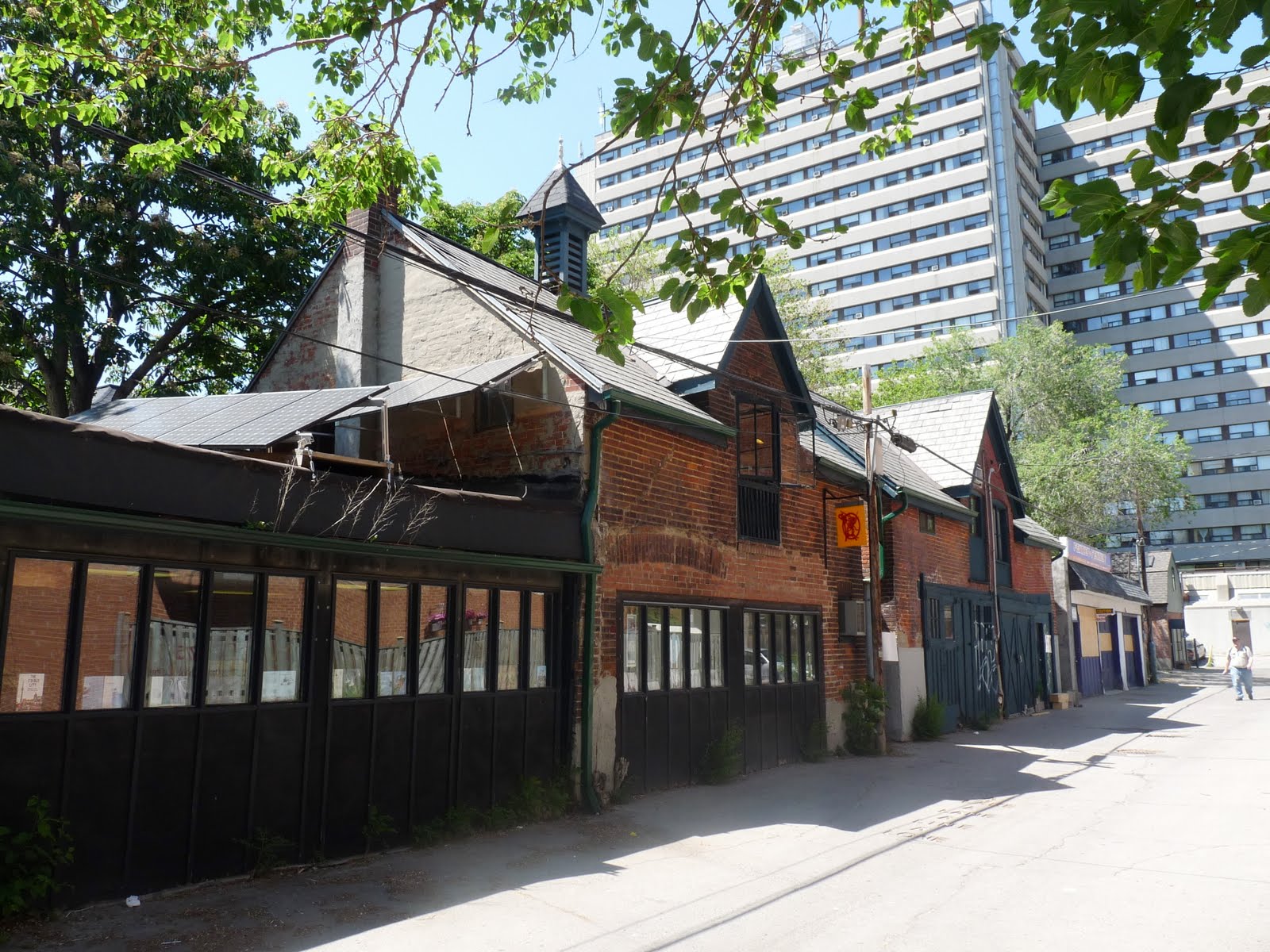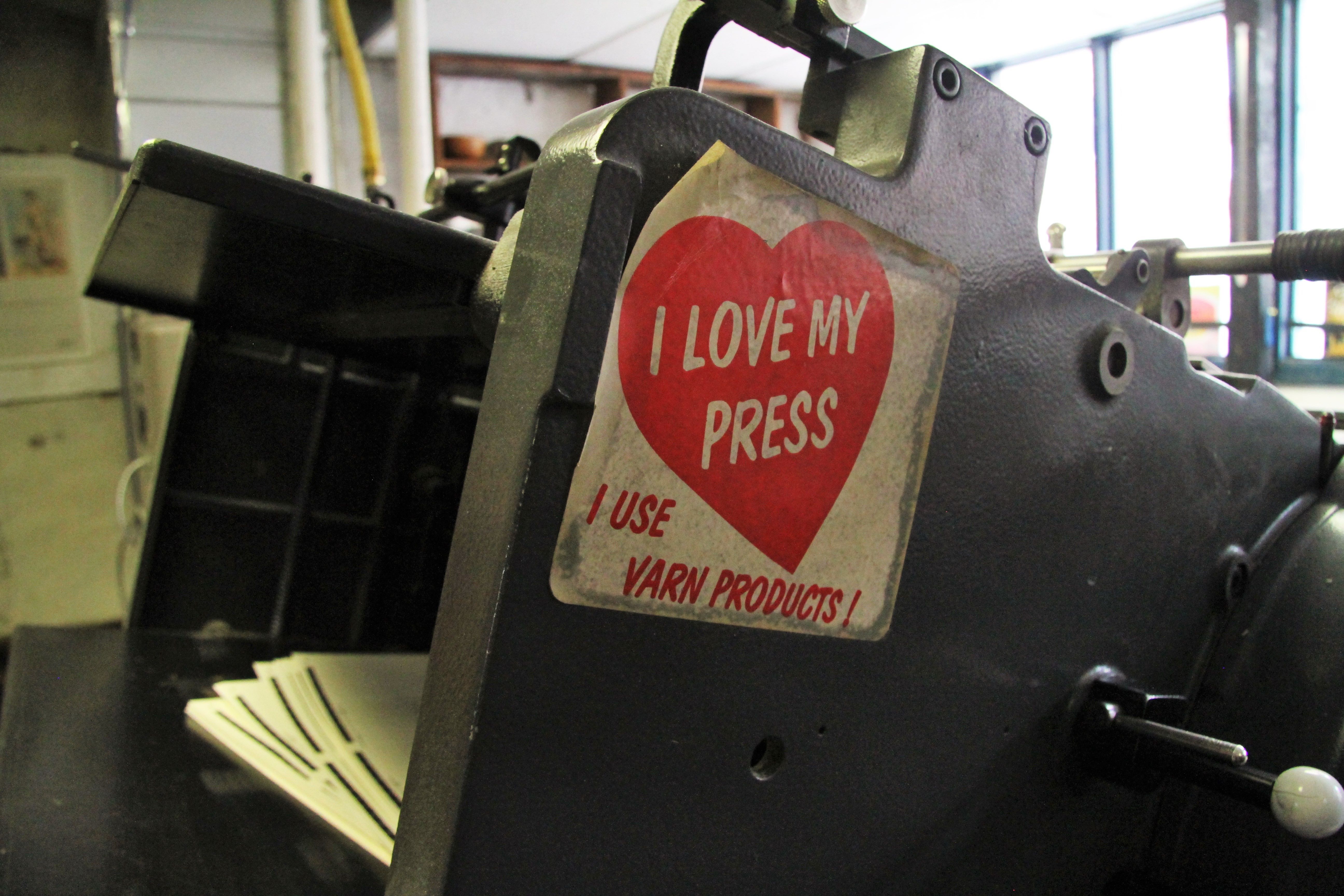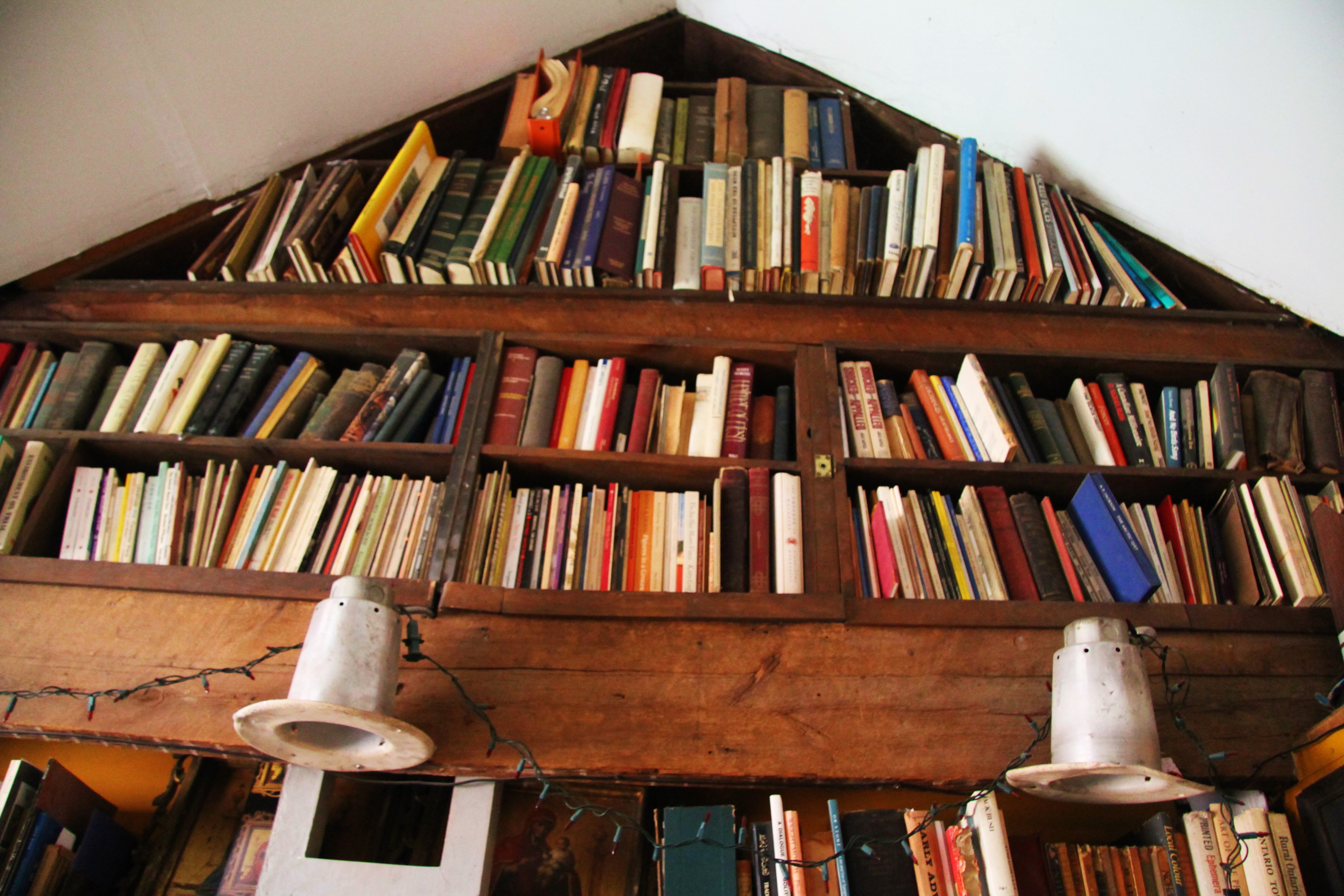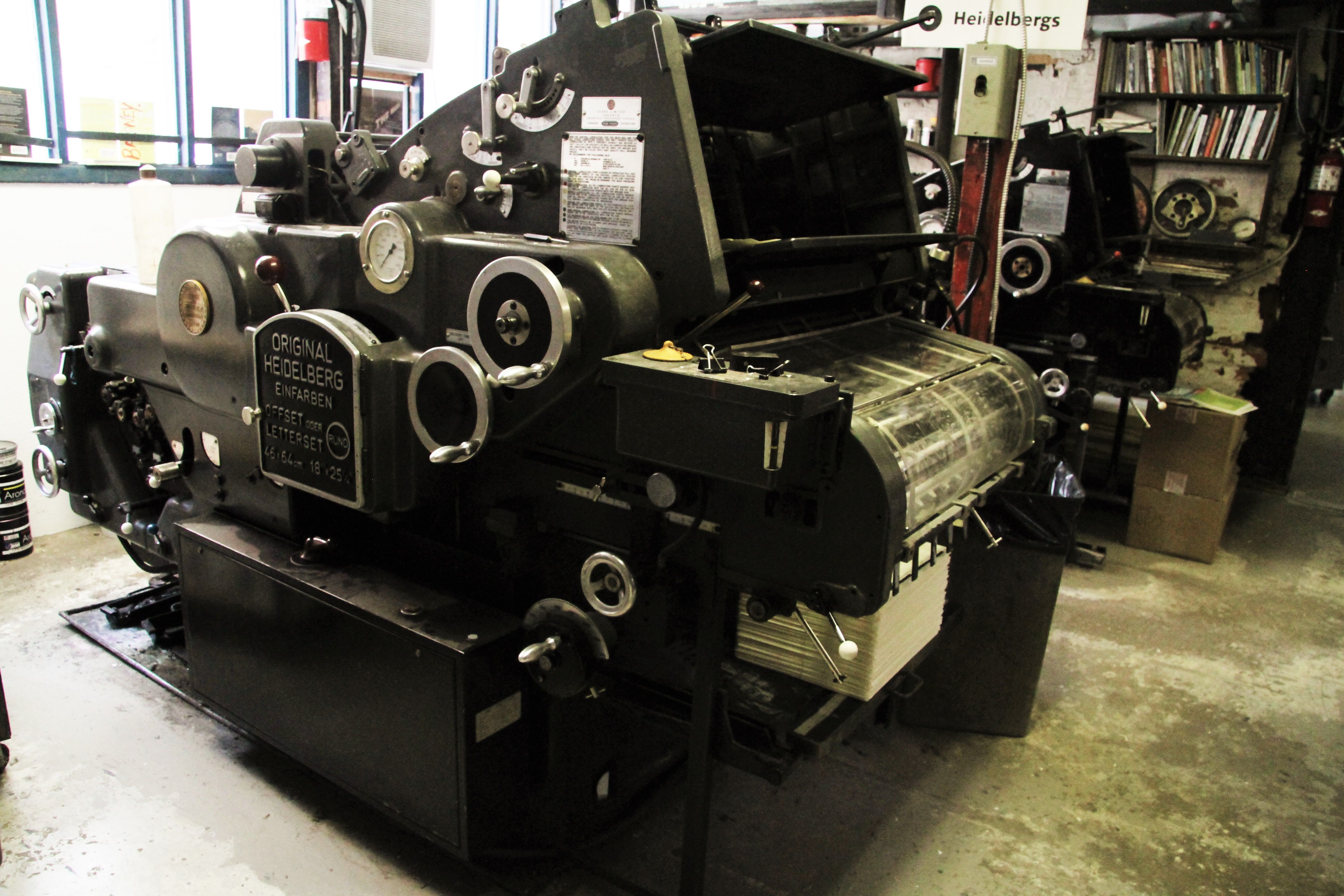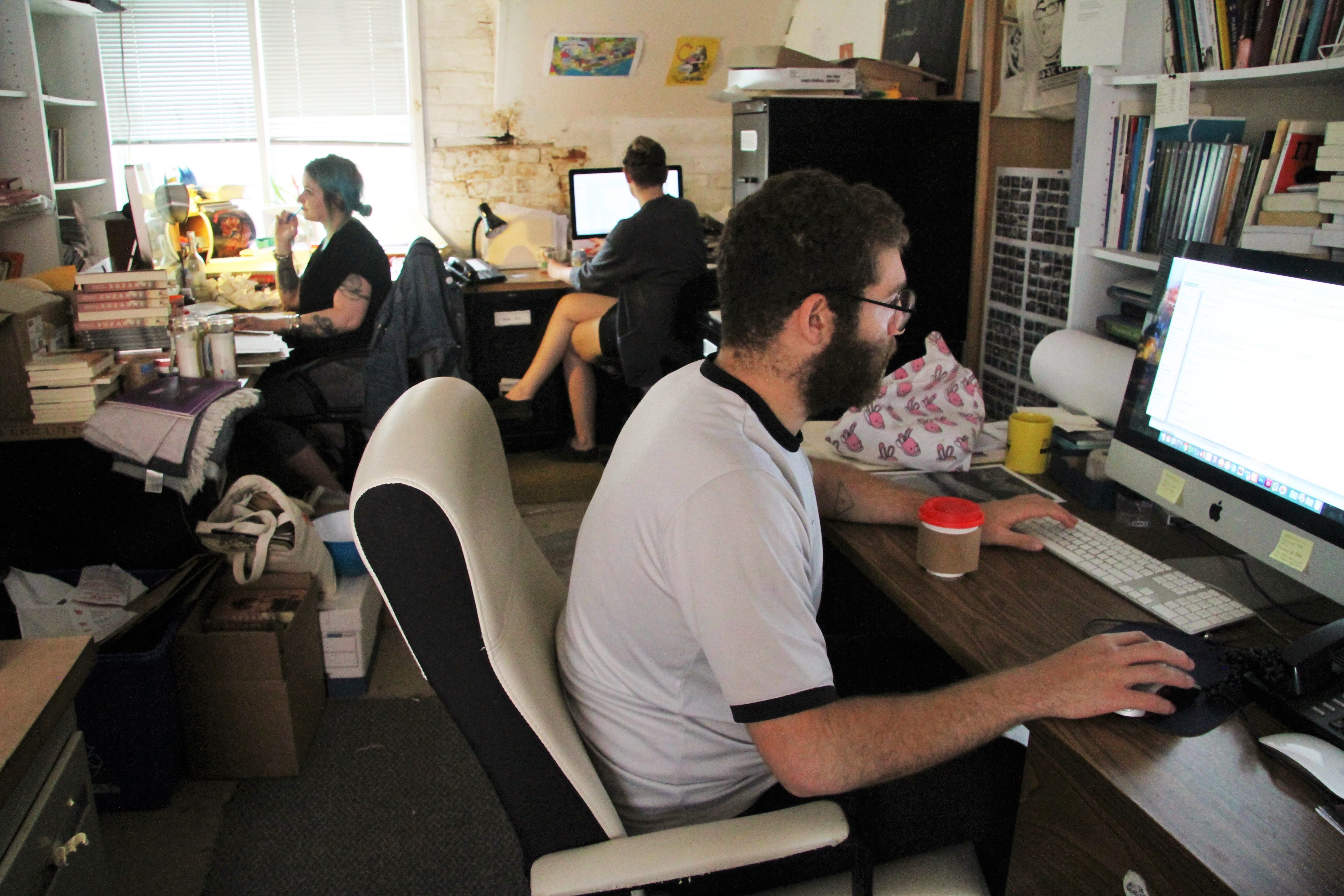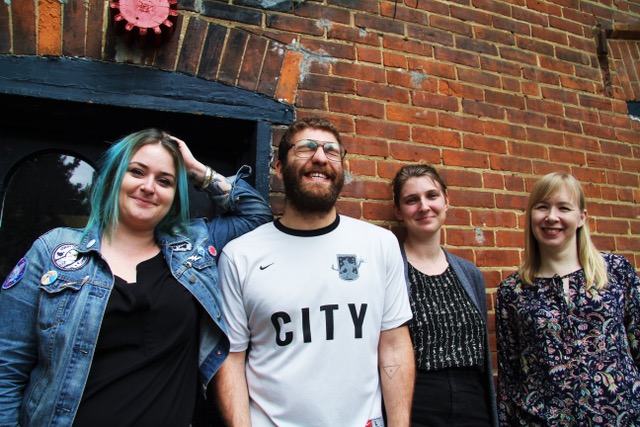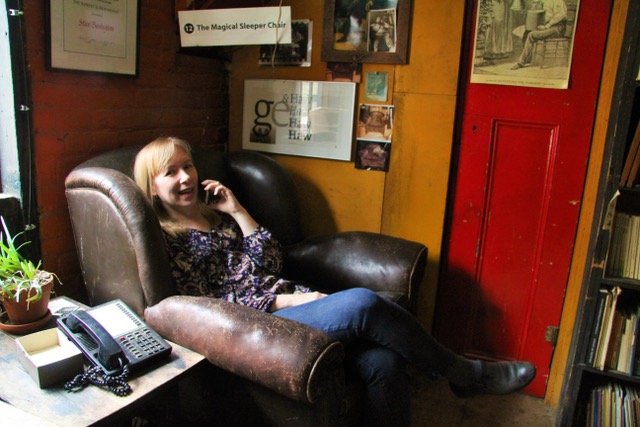Special Feature: Coach House Books
One evening every September, a back laneway in Toronto fills with writers, artists, publishers and other bookish types. They gather at the annual Coach House Books Wayzgoose to raise a glass to one of Canada’s most beloved independent publishers. Founded in 1965 by Stan Bevington, the press functions as both publisher and printing house (for itself and others), and enjoys a reputation for cutting-edge content and artisanal design. Coach House is also known for its colourful history—it served as a crash pad for American draft dodgers during the Vietnam War, and printed blotter paper for the LSD being produced at nearby Rochdale College. William S. Burroughs hung out there. So did Allen Ginsberg.
Located in several former coach houses near St. George and Bloor, the press has a hip and homespun feel about it. The buildings are a little wonky, the wooden stairs are steep and worn. There are stacks of books and papers everywhere and an antique Challenge Gordon platen press, looking nifty near the entrance. It’s a place any artist would feel comfortable in. Like an old pair of very cool shoes.
Michael Ondaatje, bpNichol, Gil Adamson, Andre Alexis... just a few of many well-known writers whose early works were published by Coach House. And the press is always on the look-out for distinct voices. Their submission guidelines state that they especially want work from members of diverse communities, including Indigenous writers, writers of colour, writers with disabilities, writers from the LGBTQ community and writers who identify with other marginalized groups.
In recent years, the small but mighty press has been punching above its weight—garnering dozens of award nominations, and carrying off Canada’s richest literary prizes, including the Scotiabank Giller Prize, the Griffin Poetry Prize and the Rogers Writers’ Trust Fiction Prize.
I talked to Editorial Director Alana Wilcox about the press and what’s ahead for the next half century at Coach House.
OB:
On the day I visited Coach House to take photos, you had no running water. What’s it like working in the coach house? And I mean the physical buildings, not the press.
AW:
At first I found it intimidating to be surrounded by so much important literary history – I sure didn’t want to be the one to knock over the tin with some of Roy Kiyooka’s ashes, for instance. But soon I acclimated. It’s not the best in terms of creature comforts, but we got a real furnace a few years back, so that helps a lot. I envy people whose office bathrooms have a roof that’s not clear plastic (hello, squirrels!), but I wouldn’t trade the charm and history, nor the gentle, metronome-like kssssh-ksssh of the printing press in the background, for anything.
OB:
Coach House titles have scooped a bevy of major nominations and prizes in the last few years. How does a small press with a (presumably) small budget compete against the big multinationals and win?
AW:
We don’t have the budget of the big presses, but we also don’t have the constraints. And so we’re free to publish what we believe in, and then work to build a bigger audience for it. I hope that our wins come from that: choosing great books and then fighting to make them credible in a world that assumes bigger is better.
OB:
Aside from lousy plumbing, what are the unique challenges facing CHB in the current market?
Your CanLit News
Subscribe to Open Book’s newsletter to get local book events, literary content, writing tips, and more in your inbox
AW:
All publishers in Canada are facing the waning prominence of the book in our culture. People spend ridiculous amounts of money on ephemeral things but are more reluctant to fork over $20 for a book. But a new bookstore just opened in Toronto, and we’re (relatively) optimistic. As for Coach House specifically? There are a lot of advantages to having our printer in the same charming building, but the downside of our space is that there isn’t nearly enough of it. We have no room for new staff or even for old archives – we’re bursting at the seams!
OB:
Tell me about the Exploded Views series, and whether CHB has plans to expand into other ongoing lines?
AW:
A few years ago, journalist/editor Jason McBride and I were talking about the rise of long-form journalism, and we decided we needed to start publishing nonfiction in the space between the Epic Tome and the long-form essay. And Exploded Views was born. The books are all short – usually 140 pages, give or take – and are mainly on cultural subjects that we found compelling. The books are intended to be what we might call ‘lyric journalism,’ meaning that they marry incisive research with a more literary (and sometimes personal) synthesis and analysis. We’re thrilled with the attention the series is receiving, and while Jason has moved on, our new series editor, Emily M. Keeler, is bringing her excellent perspective to it. And no, we aren’t looking to expand our offerings, just their reach!
OB:
Where do you see Coach House Books in the future?
AW:
I see Future Coach House in much the same shape as Present Coach House: we’ll keep publishing a small but focused list of about eighteen titles per year, with the same mix of poetry, fiction, drama, Toronto books, and Exploded Views. We’ll publish them even more smartly, and we’ll be even better at finding smart readers for them. And if we’re talking about Dream Coach House, someone (hello, squirrels!) has organized my office.
Elyse Friedman was born in Toronto, where she still lives. She has written three novels (The Answer to Everything; Then Again; Waking Beauty), a book of short fiction (Long Story Short, a Novella & Stories), and a collection of poems (Know Your Monkey). Her work has been shortlisted for the Trillium Book Award, the Toronto Book Award and the Relit Award. Her short fiction has appeared in the Journey Prize Anthology and Best Canadian Stories, and she won the Gold National Magazine Award for Fiction for her story The Soother. Know Your Monkey was selected as a Foreword Magazine Book of the Year. Elyse has also written for screens large and small, radio, magazines and the stage.
